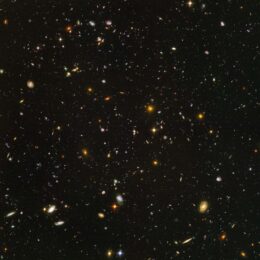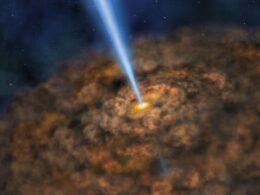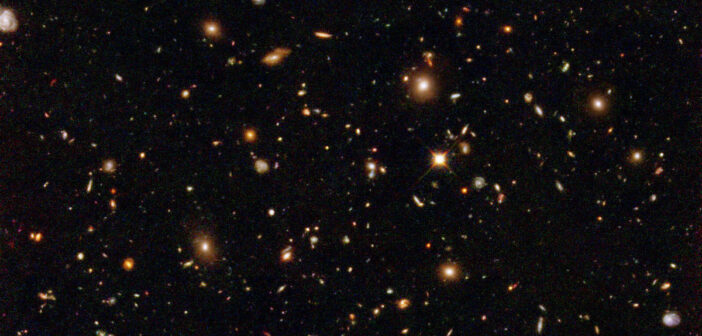Fifteen years ago, the Hubble Space Telescope gazed intently at the infrared glow of galaxies in a tiny fraction of the sky. New research shows how this patch of space has changed since then.
Ultra-Deep and Ultra-Famous

The Hubble Ultra-Deep Field at visible wavelengths. [NASA, ESA, S. Beckwith (STScI), and the HUDF Team]
In 2008–2009 and 2012, Hubble revisited the region, this time piecing together infrared portraits that revealed even more distant galaxies that were absent from the visible-light view. The most distant galaxies in the infrared images appear as they were when the universe was just 2–5% of its current age. What can we learn from comparing these archival images to new images of the same patch of sky?
Paying Another Visit
With Hubble happily still operational (knock on wood!), Matthew Hayes (Stockholm University) and collaborators turned the telescope’s infrared camera toward the Ultra-Deep Field once again in 2023, aiming to find differences between the new images and the original infrared deep-field images from 2008–2009 and 2012.

Illustration of an active galactic nucleus. [NASA/SOFIA/Lynette Cook]
Spotted: Black Holes
Hayes’s team used two methods to search for sources with varying brightness — potential active galactic nuclei — in the new and archival Hubble images:
- Subtracting one image from another to identify objects that appear in only one image
- Comparing the brightness of the centers of galaxies between images

Demonstration of the photometric variability of the two active galactic nuclei. The source at z = 2.0 is shown in the top row, and the source at z = 3.2 is shown in the bottom row. Click to enlarge. [Hayes et al. 2024]
Hayes’s team used these results to place a lower limit on the number density of black holes during the epoch of reionization, when radiation from the first stars and galaxies transformed the universe from opaque to transparent. They found that the number density of black holes in this time period is similar to the present day value, providing a critical test of black hole formation models. These are just the first results from this campaign, so you can look forward to more ultra-deep-field findings in the future!
Citation
“Glimmers in the Cosmic Dawn: A Census of the Youngest Supermassive Black Holes by Photometric Variability,” Matthew J. Hayes et al 2024 ApJL 971 L16. doi:10.3847/2041-8213/ad63a7
